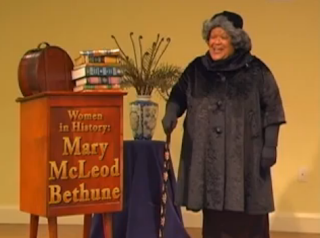I am no stranger to developing presentations for large groups. One of my duties UNC-CH was to prepare PPts for the lawyers at the Institute of Government....back then PPts were the cutting edge of technology. Really. I'm that old. They had to be legal, detailed, with nothing left to the imagination. Thirty years later, preparing PPts for gifted research presentations, the level of detail does not have to be as expansive but sources are in-text cited and then included in a reference slide at the end to prove sources. The citing practice still continues when I prepare a presentation for professionals in the field...it is expected.
 But with this assignment I needed to approach the information from a different perspective. I needed to display impact, directed to a specific audience for a specific purpose. I chose to prepare this PPt for giftedness as a guide for teachers who will have classrooms of heterogeneous populations but won't know what to do with gifted thinkers. Some teachers think giftedness is an elitist concept intended to give some students special favors.
But with this assignment I needed to approach the information from a different perspective. I needed to display impact, directed to a specific audience for a specific purpose. I chose to prepare this PPt for giftedness as a guide for teachers who will have classrooms of heterogeneous populations but won't know what to do with gifted thinkers. Some teachers think giftedness is an elitist concept intended to give some students special favors.
 |
| Differentiation helps catches even those not yet identified officially. |
For this PowerPoint I followed a 'story' that begins with comparing thinking to bread making. It moves on to what a teacher can do to address individual needs in the classroom and then how to recognize gifted traits in a student who may need to be referred for evaluation. It ends with a tie back to the beginning bread metaphor. I initially wrote my story as if I were talking to someone, then repeatedly edited it for brevity until I had gone too far and it made no sense. A careful back step made the information meaningful, but brief. I used color, contrast, and humor where possible to portray meaning without words, or few words. It was a delicate dance back and forth to select the right words, the placement, and the color to express meaning. Ultimately I settled on what you saw and saved it to DropBox so it can be accessed later and through many different devices. This PPt could stand alone as an emailed attachment to teachers who have my students sprinkled in their rosters, or could be used as a faculty in-service where I would speak additional explanation and provide handouts.
This assignment, using a PowerPoint with teachers, clearly defines the fifth standard of the ISTE-NETS-S: engaging in professional growth and leadership, in particular contributing to the effectiveness and vitality of the teaching profession and of the school.
The purpose and audience needs to be clearly defined when preparing a PowerPoint. The images need to be memorable so the information lingers long after the last slide slips away.
.png)

